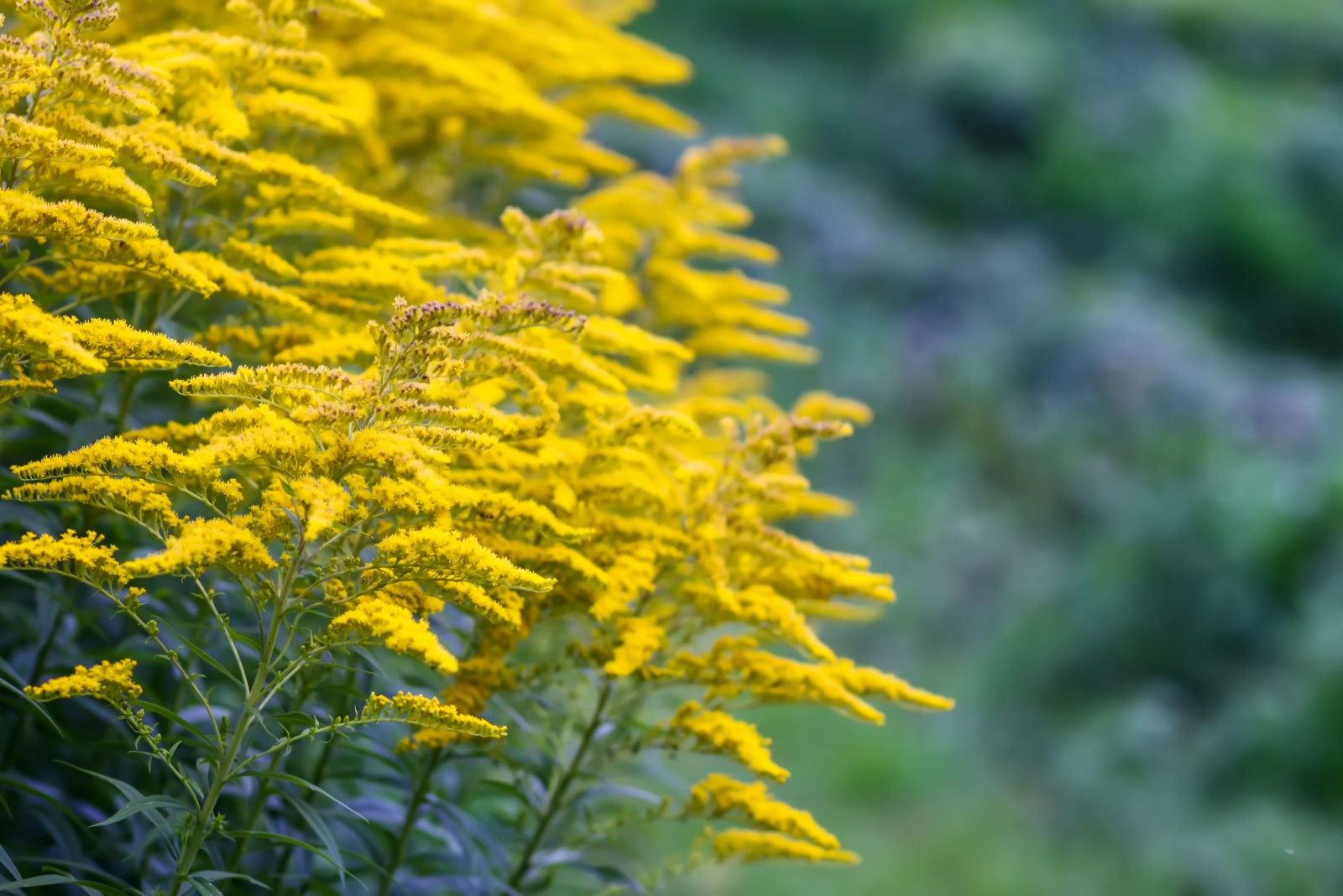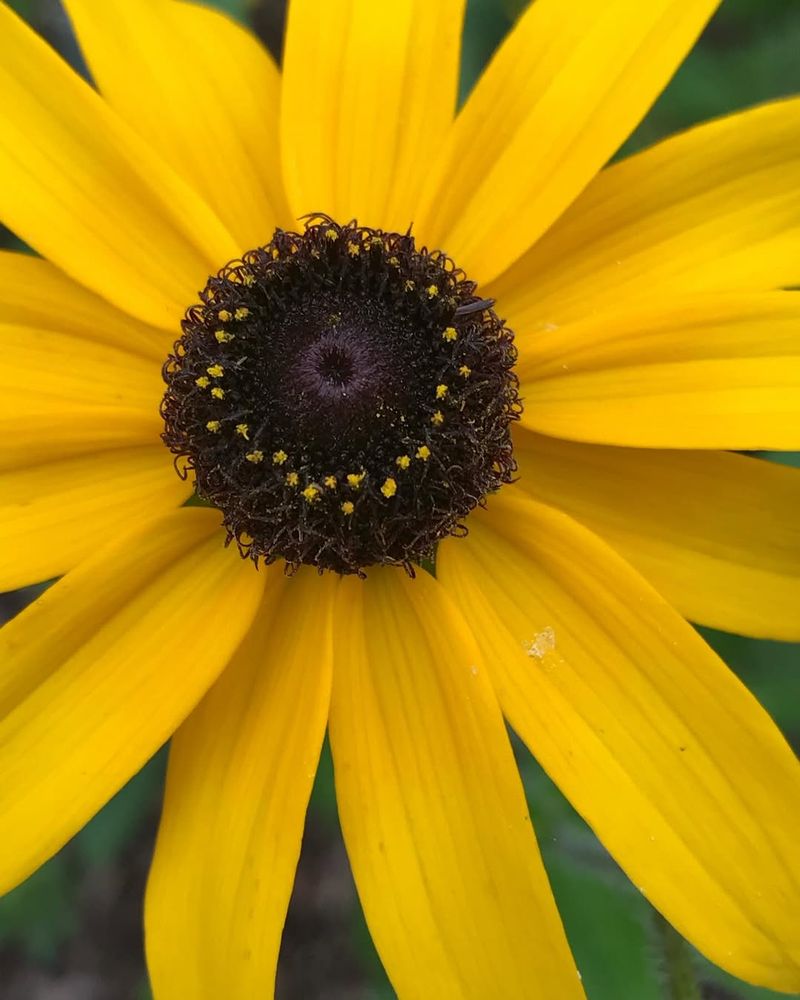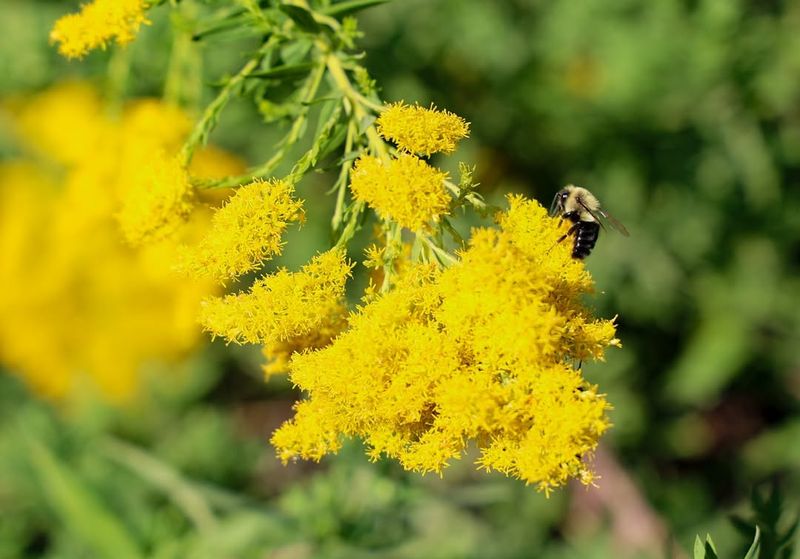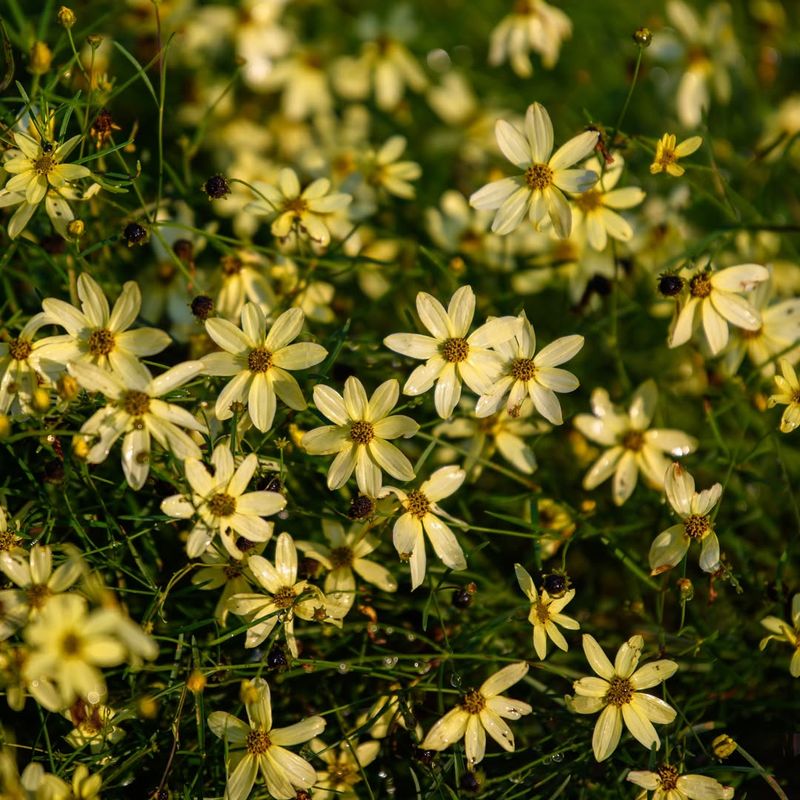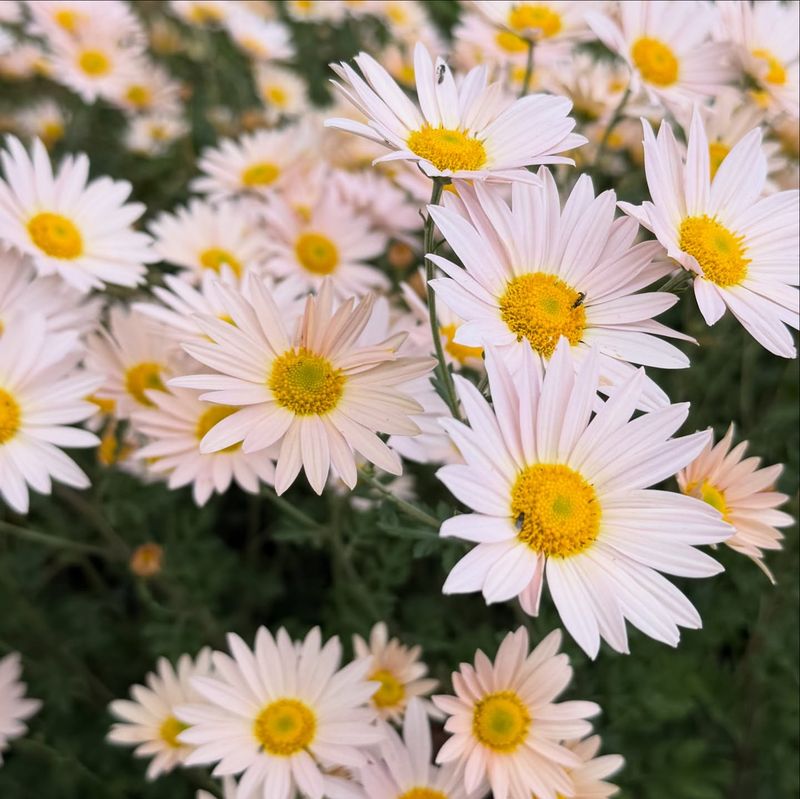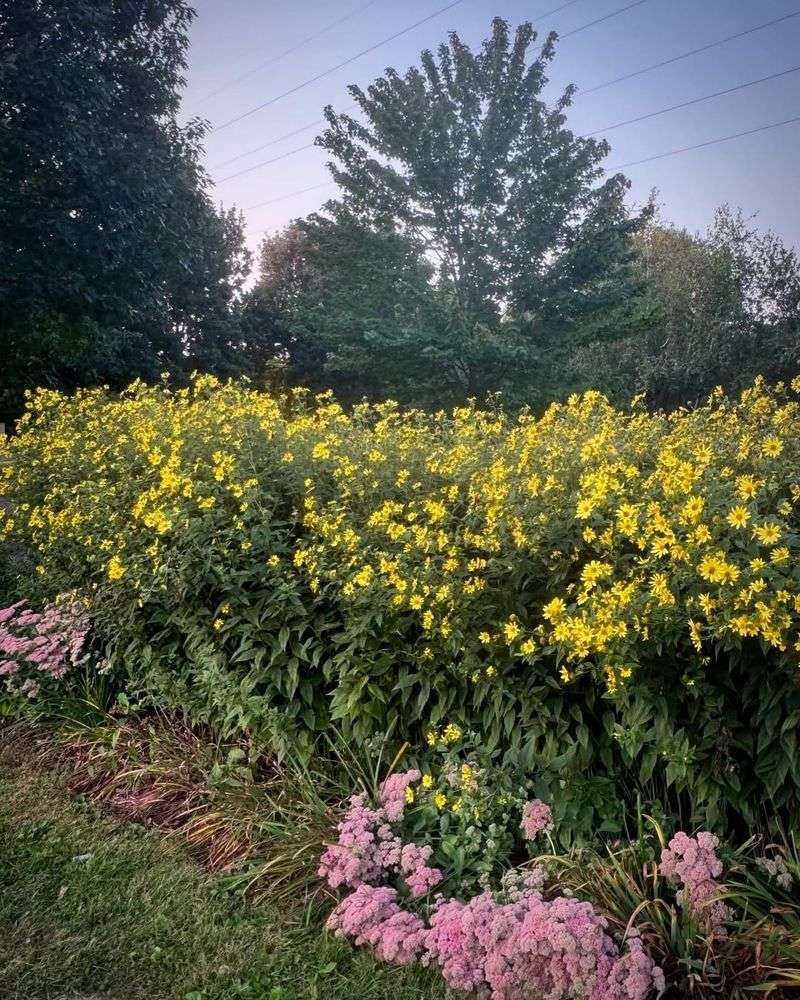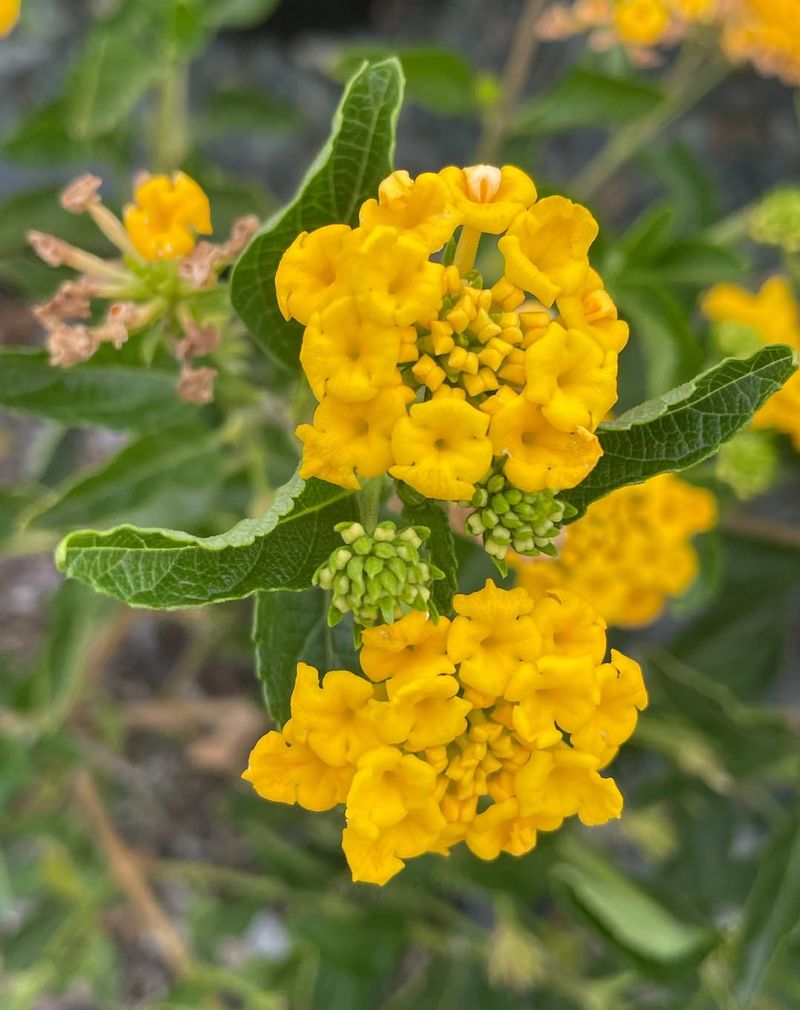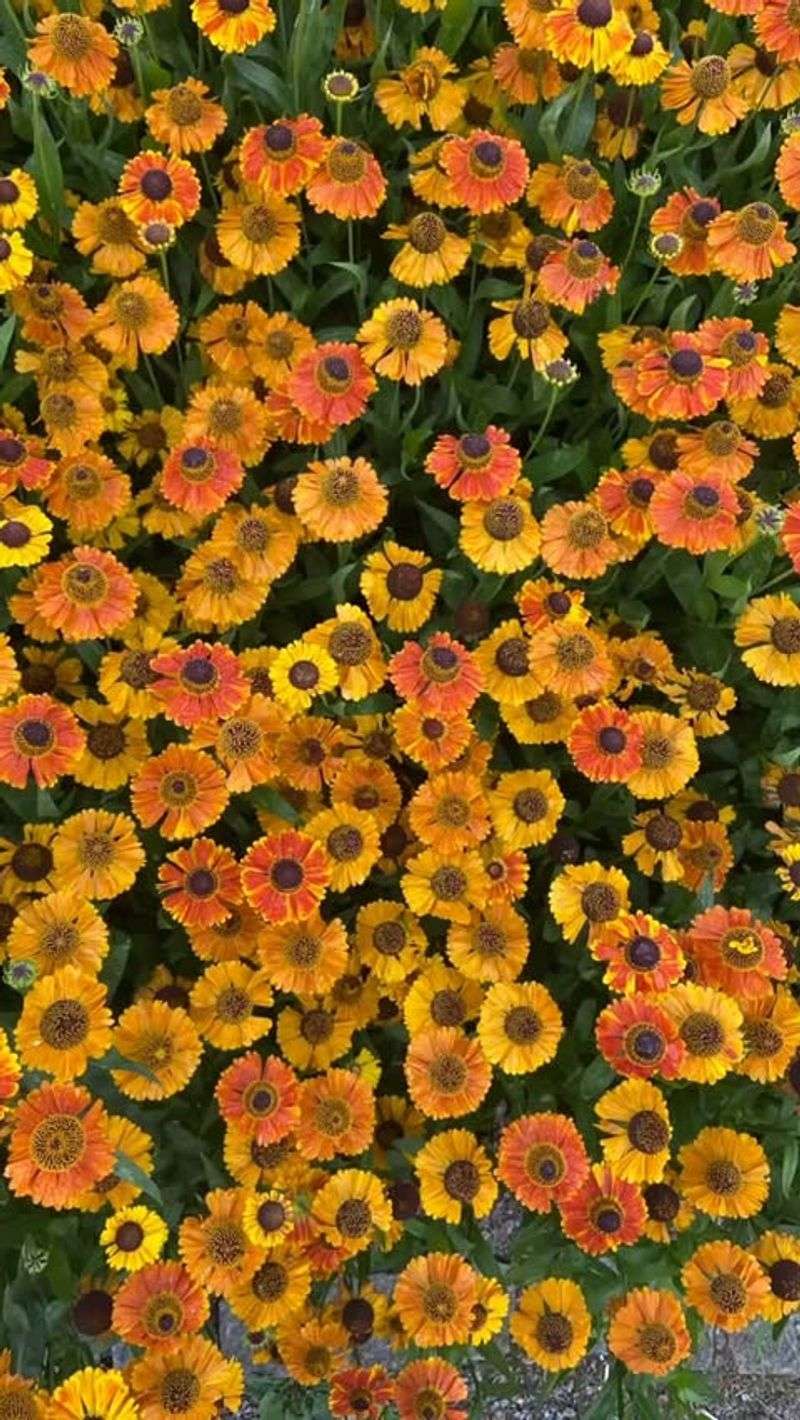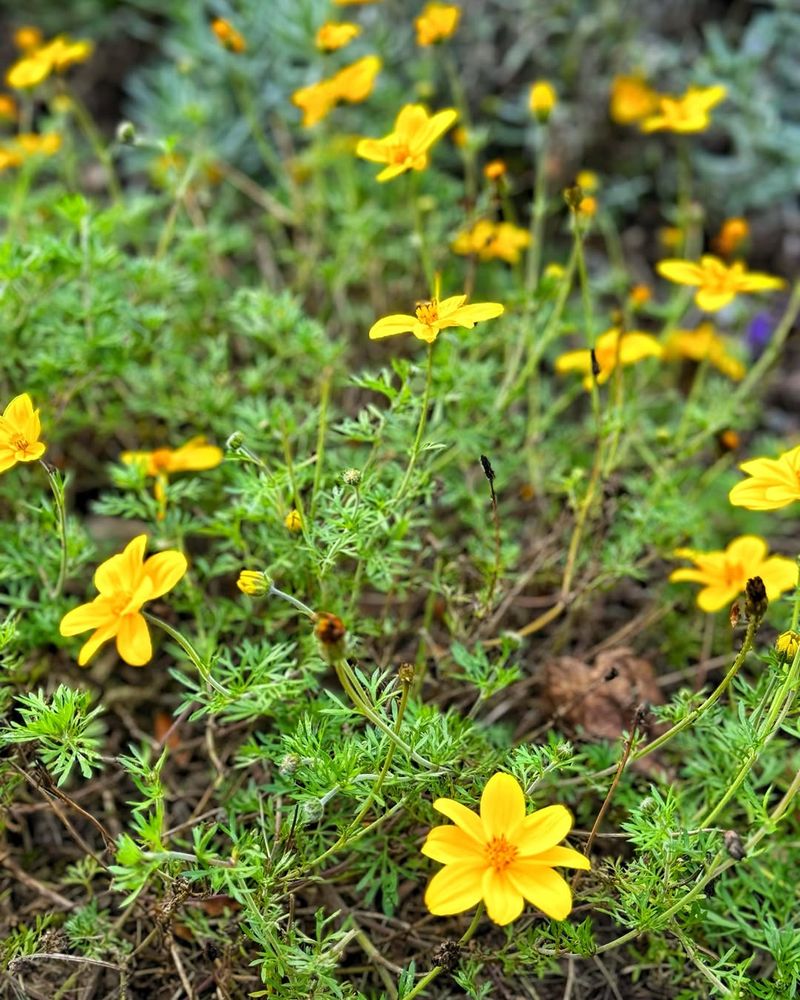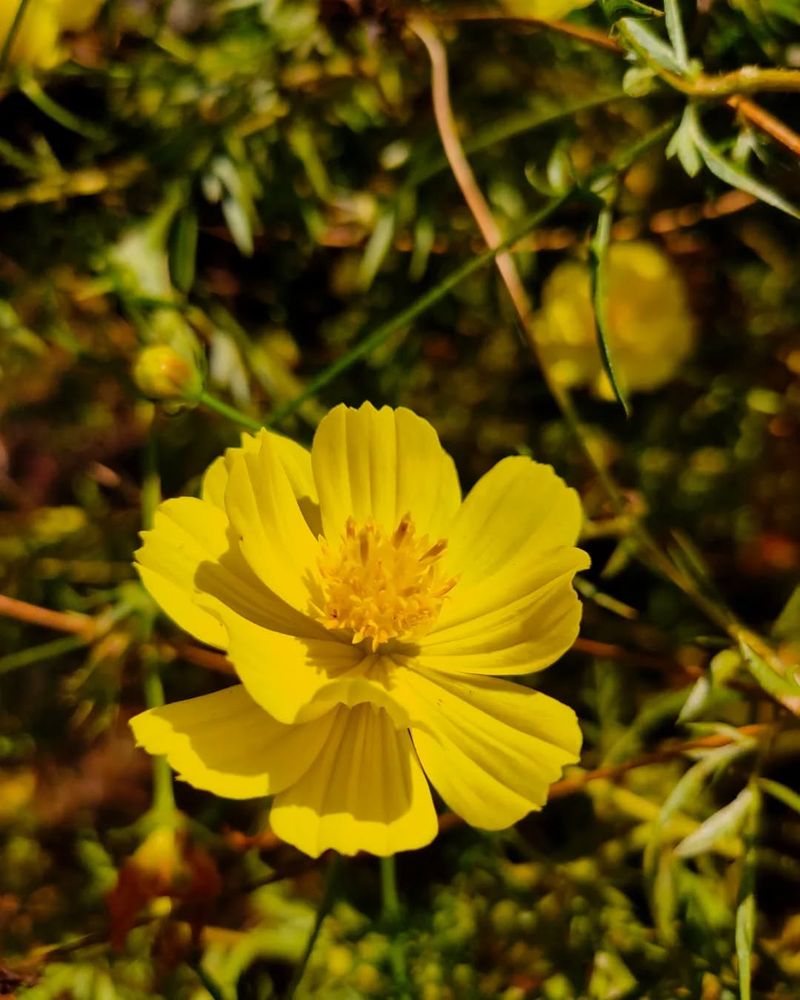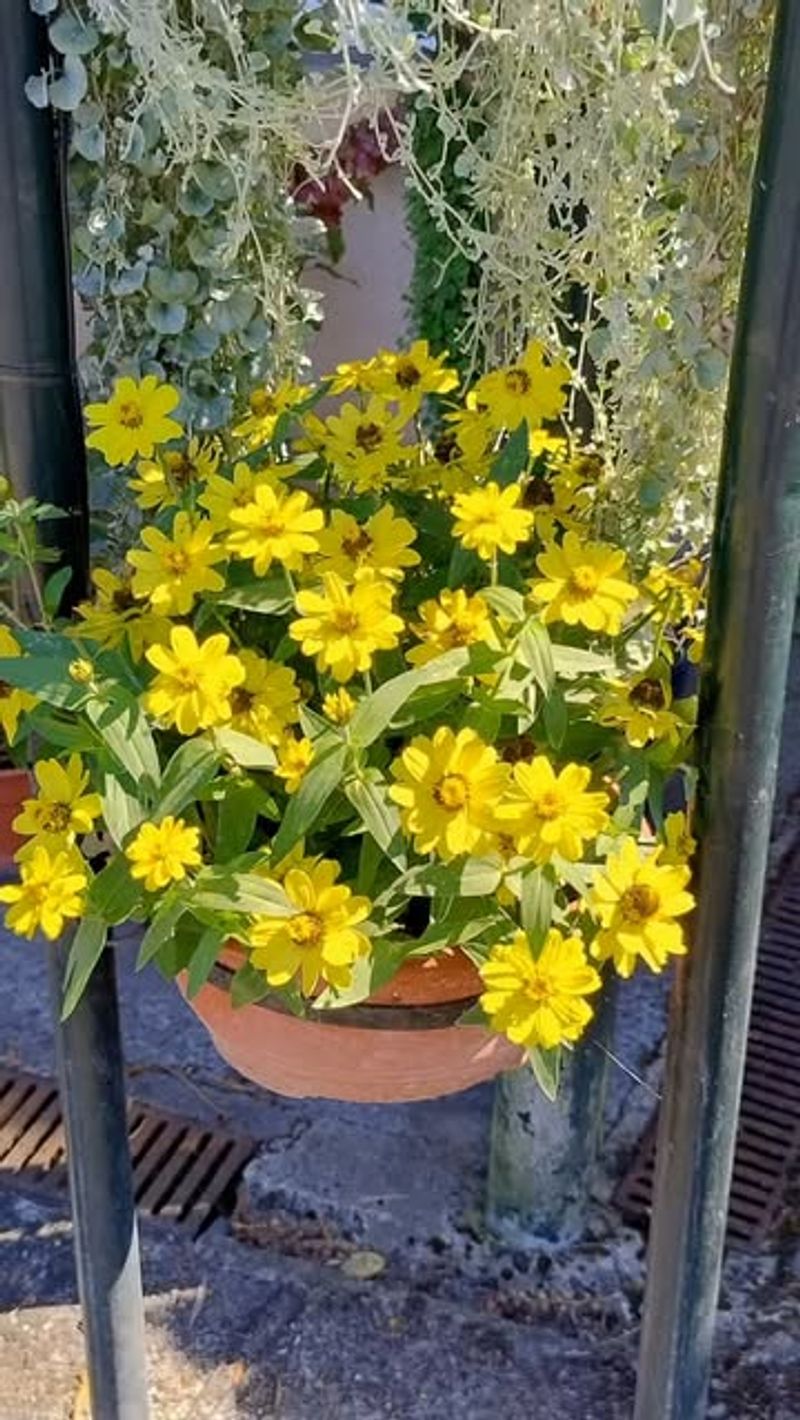Tennessee gardens don’t have to fade when summer ends. Plenty of yellow flowers keep blooming and hold their sunny color well into fall, bringing warmth to your yard even as temperatures drop.
Whether you’re looking to brighten up flower beds or add pops of gold to containers, these reliable bloomers will carry you through the season with style and cheer.
1. Black-Eyed Susan
Few flowers say “Tennessee summer and fall” quite like the Black-Eyed Susan. Its cheerful daisy-like blooms with dark chocolate centers start showing up in midsummer and stick around until the first hard frost hits your garden.
These tough natives handle heat, humidity, and occasional drought without complaining. They reseed themselves year after year, creating natural drifts of gold that require almost no effort from you.
Plant them in full sun with decent drainage, and they’ll reward you with months of color that butterflies absolutely adore.
2. Goldenrod
Goldenrod gets blamed for allergies it doesn’t cause, but this native wildflower deserves a spot in every Tennessee fall garden. Bright yellow plumes appear in late summer and hold strong through October, creating vertical interest when other plants start fading.
Bees and butterflies flock to these blooms for late-season nectar. The plant tolerates clay soil and adapts to various moisture levels, making it perfect for our unpredictable weather patterns.
Choose cultivated varieties if you want shorter, tidier plants that won’t spread as aggressively as their roadside cousins do.
3. Coreopsis ‘Moonbeam’
This perennial favorite earned its Perennial Plant of the Year award for good reason. Soft, buttery yellow blooms cover compact plants from June straight through November in Tennessee gardens, never taking a break as long as you deadhead occasionally.
‘Moonbeam’ stays neat and tidy without constant fussing, reaching about 18 inches tall and spreading slowly to form attractive clumps.
The threadlike foliage looks good even when flowers aren’t present. It handles our summer heat without wilting and keeps pumping out color when fall arrives.
4. Chrysanthemum ‘Sheffield Pink’ (Yellow Varieties)
Hardy garden mums bred for Tennessee’s climate will return year after year if you plant them in spring rather than treating them as fall disposables. Yellow varieties range from pale lemon to deep gold, all holding their color beautifully as September turns to October.
These aren’t the floppy greenhouse mums sold everywhere in autumn. True hardy types develop strong root systems and woody stems that survive our winters.
Pinch them back monthly until July to encourage bushy growth, then let them bloom their hearts out when fall finally arrives.
5. Helianthus ‘Lemon Queen’
This perennial sunflower towers at 5 to 7 feet, creating a back-of-the-border statement that keeps going strong through Tennessee’s fall months.
Soft lemon-yellow flowers cover the upper portions of each plant, creating a cloud of color that sways gracefully in autumn breezes. ‘Lemon Queen’ spreads through underground rhizomes, so give it room or plant it where spreading won’t cause problems.
Songbirds appreciate the seeds that form after flowers fade. Full sun and average soil are all it needs to thrive year after year.
6. Lantana camara ‘New Gold’
If you want nonstop yellow color that keeps glowing through Tennessee’s fall season, ‘New Gold’ lantana delivers. Its clusters of bright golden blooms never seem to quit, lasting from early summer until the first hard frost finally arrives.
This sun-loving plant laughs at heat, humidity, and even brief dry spells — perfect for Tennessee’s unpredictable late-season weather. It stays compact, making it ideal for borders, containers, or hanging baskets that could use a cheerful pop of gold.
Pollinators can’t resist it either. Butterflies and hummingbirds keep visiting right up until cold weather shuts everything down, proving ‘New Gold’ truly lives up to its name.
7. Helenium ‘Mardi Gras’
Sneezeweed sounds unappealing until you see ‘Mardi Gras’ blooming its head off in your Tennessee garden every fall. Yellow petals with orange highlights surround prominent brown buttons, creating flowers that look hand-painted by someone with serious artistic talent.
This perennial starts blooming in August and continues through October, bridging the gap between summer and fall beautifully.
It prefers consistent moisture but tolerates short dry spells once established. Butterflies treat these blooms like an all-you-can-eat buffet during migration season.
8. Bidens ferulifolia
Apache Beggarticks might not sound glamorous, but this annual keeps pumping out tiny yellow star-shaped flowers until hard frost finally stops it. In Tennessee, that often means blooms lasting well into November.
It works beautifully in containers and hanging baskets, cascading over edges with ferny foliage covered in cheerful blooms. Heat and humidity don’t slow it down one bit during our brutal summers.
Butterflies visit constantly, and you’ll never need to deadhead since flowers just keep coming regardless. It practically grows itself with minimal water and zero fertilizer.
9. Cosmos sulphureus
While pink and white cosmos get all the attention, yellow cosmos deserves equal love in Tennessee fall gardens. This annual self-sows reliably, returning year after year without any effort on your part once you plant it initially.
Flowers range from pale yellow to deep orange-gold, all holding their color perfectly as summer transitions to autumn. Plants tolerate poor soil and drought better than their pastel cousins do.
Goldfinches love the seeds, so leave some spent flowers standing instead of cutting everything back when blooms fade.
10. Zinnia ‘Profusion Yellow’
Zinnias typically struggle with powdery mildew in Tennessee’s humid climate, but ‘Profusion Yellow’ resists disease while blooming nonstop from June through the first hard freeze. Compact plants stay tidy at about 12 inches tall, perfect for front-of-border spots.
Single flowers in clear, bright yellow attract butterflies and hummingbirds throughout the growing season. They handle our intense summer heat without wilting and keep their color intensity even as temperatures cool.
Deadheading isn’t necessary, though it does encourage even more blooms if you have time.

